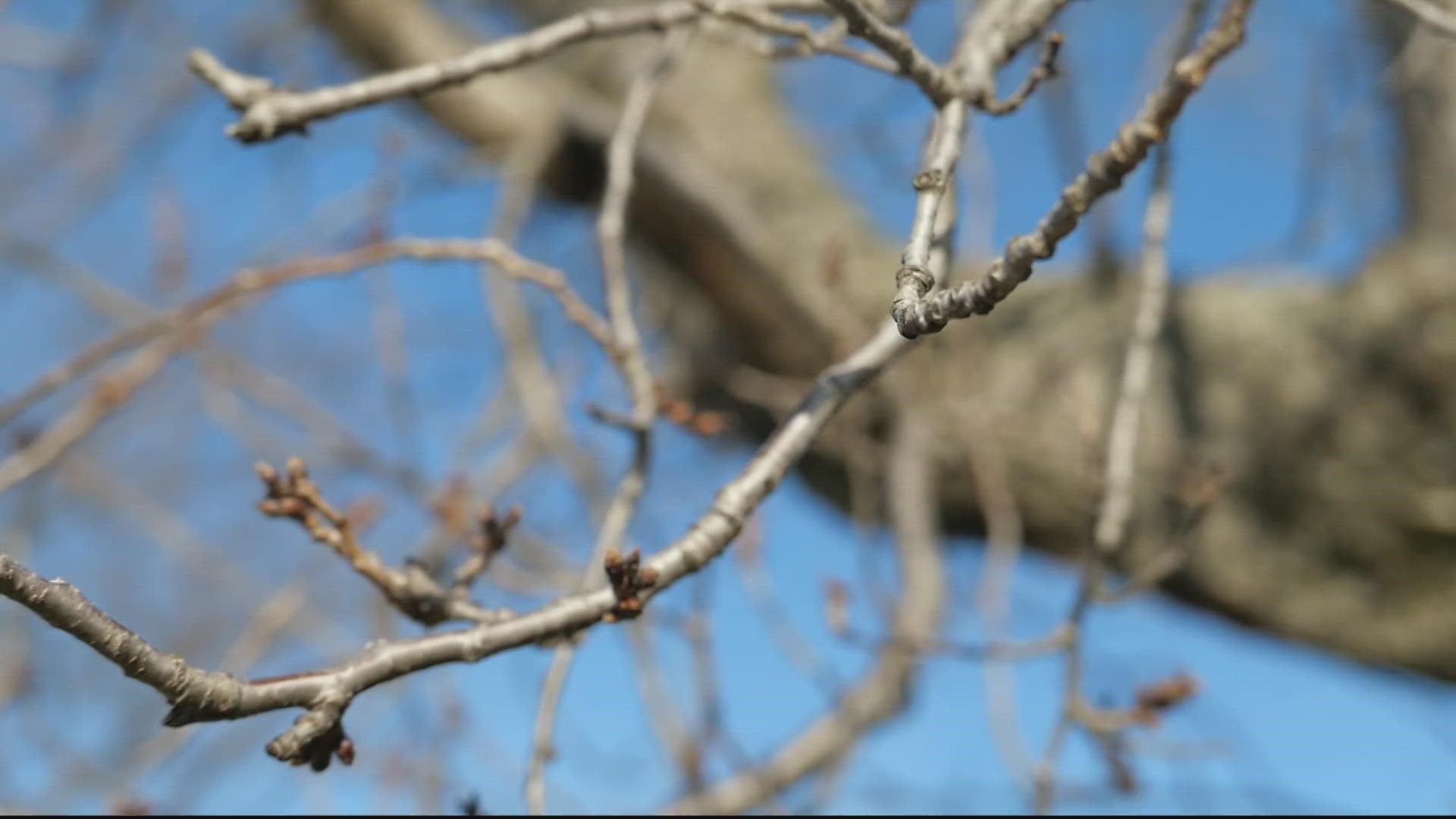WASHINGTON — Another week of escaping winter’s wrath has us feeling like spring is in the air – and with it, one of the most D.C. things of all, even though it’s only February.
THE QUESTION
Is cherry blossom season starting earlier?
OUR SOURCES
THE ANSWER
Yes, the nation’s most iconic foliage is springing up sooner than it used to, and is expected to be early in 2023 as well.
WHAT WE FOUND:
Soon the sidewalks around the Tidal Basin will be bustling beneath the cherry blossoms’ bloom: they have had a warm winter’s welcome.
“We know that heat is a driver for bringing flowering trees into blossom and into bloom,” said Michael Litterist with the National Park Service. “It stands to reason that we're probably going to see the cherry blossoms earlier than the historic average date.”
That historic average peak, when 70% of blossoms are in full bloom, is April 4.
Expecting an early show isn’t new this year.
“We are certainly seeing a correlation between rise of average temperatures and earlier blossoming of the cherry blossoms,” Litterst said.
EPA data shows peak bloom dates are about a week earlier than a century ago, and the peak bloom has actually happened before April 4 for 16 of the past 20 years.
The agency explains that other environmental factors, like sunlight and temperature throughout the prior year, impact peak bloom timing, too. Scientists are confident a warming climate is a main contributing factor to earlier spring sights, such as cherry blossoms.
Still, predicting the peak isn’t an exact science.
“It's not as simple as saying we had this average temperature for the month and therefore the blossoms are going to come out this early; 2019 is a perfect example,” Litterst said. “At the time it occurred, that was the third-warmest winter on record, and cherry blossoms still held off until April 1.”
Even with budding excitement over this year’s bloom, Washington’s favorite flower faces growing threats from a warming planet.
“There are questions about how does it affect pollinators. For example, bee species that are so vital to making sure that the trees are pollinated and come out,” Litterst said. “Just here around the Tidal Basin, there are areas that flood twice a day during high tide because we know that there is a difference in the level of the Tidal Basin by about four feet since it was first built.
“So it becomes an increasing challenge for park managers and for park visitors as well.”

